Abstract
The Onchocerciasis Control Programme in West Africa recently extended its operation to Guinea, Guinea-Bissau, the western part of Mali, Senegal and Sierra Leone. To estimate the number of people infected and blinded by the disease and to determine its distribution and severity in the extension area, 215 villages were selected, using a stratified random sampling procedure, and surveyed. All the relevant entomological information available at the time was used in the sampling procedure and in the selection of 92 non-representative villages that were surveyed to confirm the findings. In addition, the populations of 608 villages were examined to map out in detail the distribution of onchocerciasis in the areas at a high risk of onchocercal blindness. The study estimated that 1,475,367 people were infected and 23,728 were blinded from onchocerciasis out of a rural population of 4,464,183. The northern and western part of the study area and the lower Niger basin presented a low or no risk of onchocercal blindness. The upper Niger basin, the south-central part of Sierra Leone, and three small foci in the Gambia, Bakoye, and lower Niger river basins were areas with a high risk of onchocercal blindness. The other parts of the study area presented a medium risk of onchocercal blindness. By detecting the communities at risk of onchocercal disease this study permits the selection of populations for disease control based on mass distribution of ivermectin, a microfilaricide.
Full text
PDF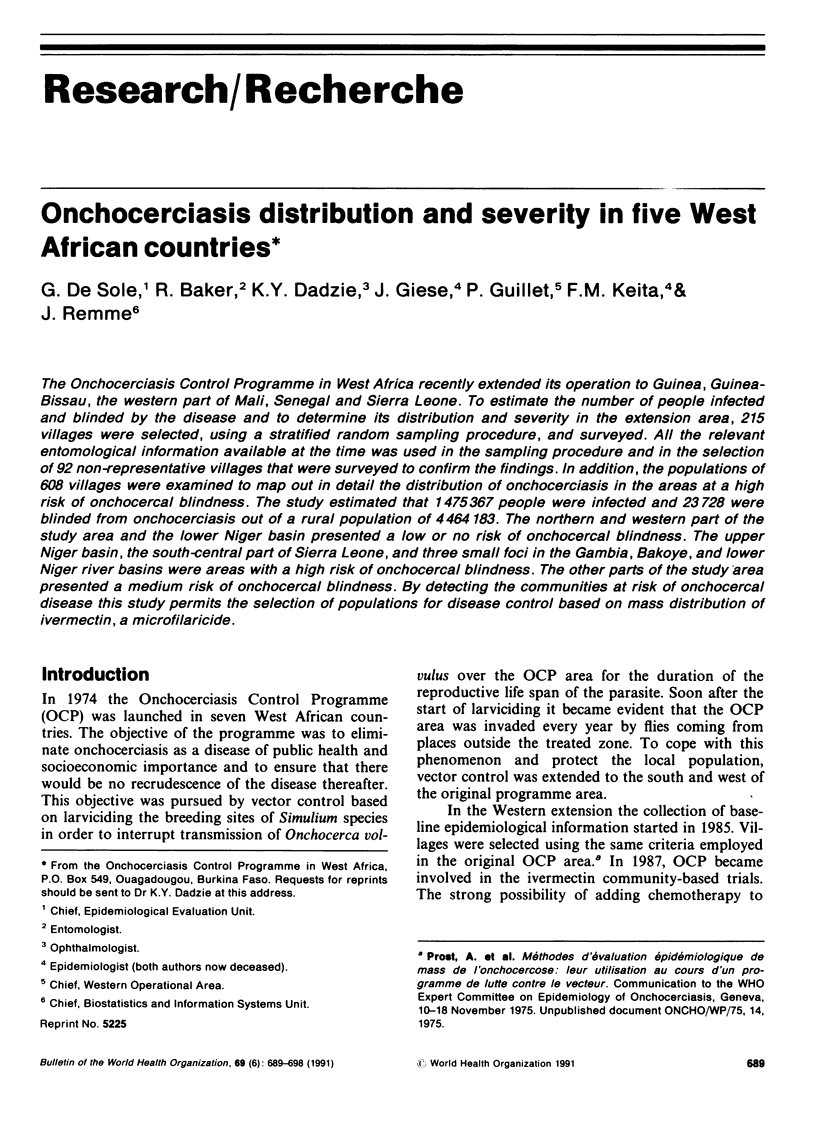

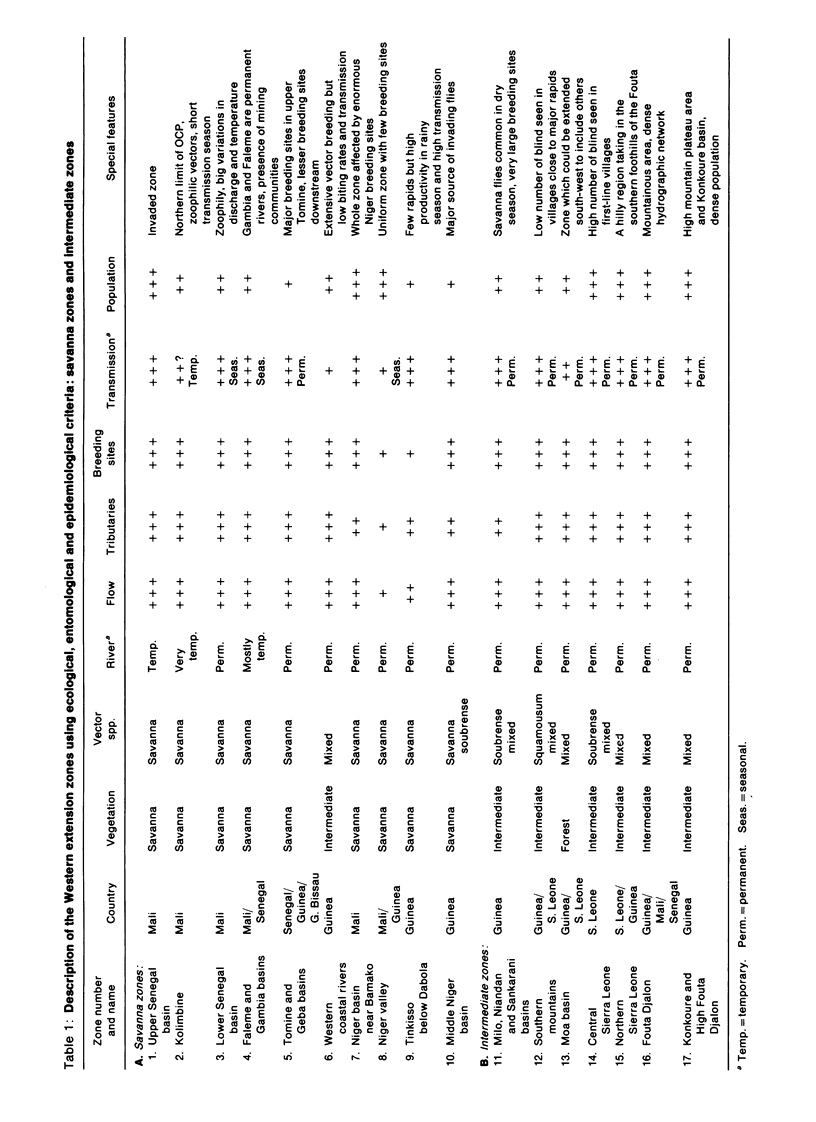

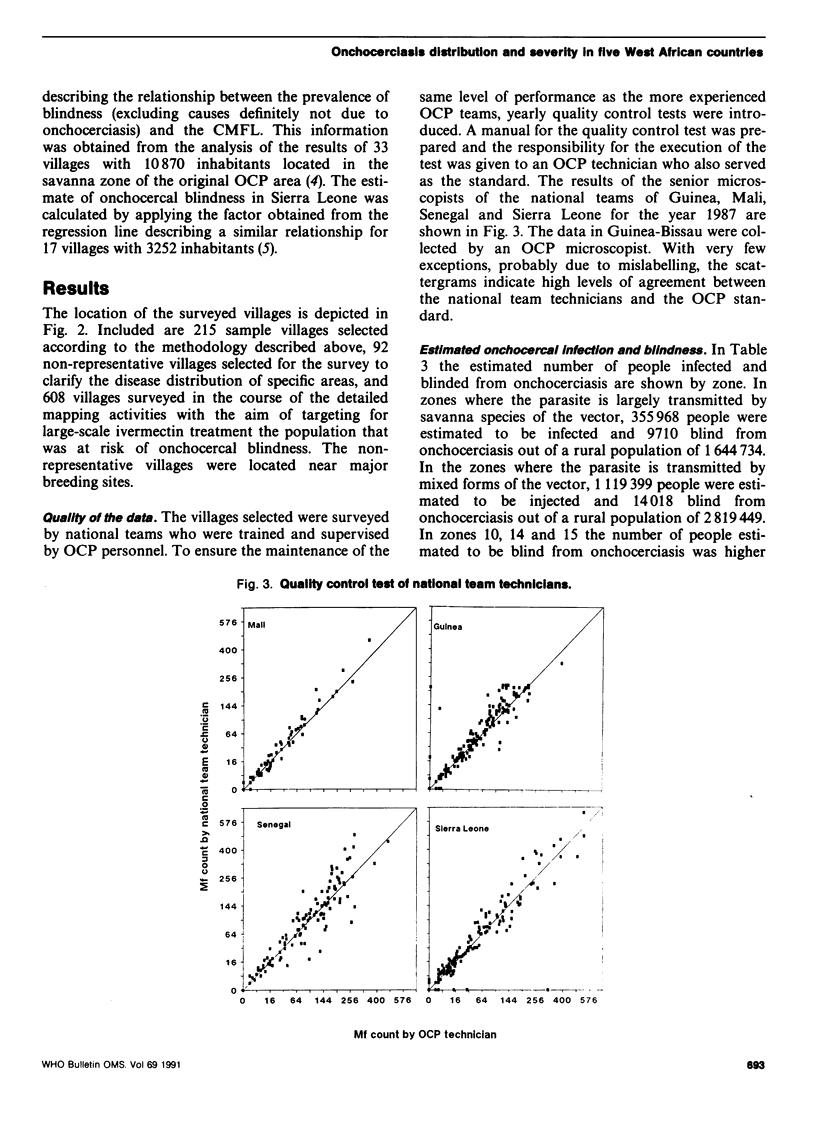
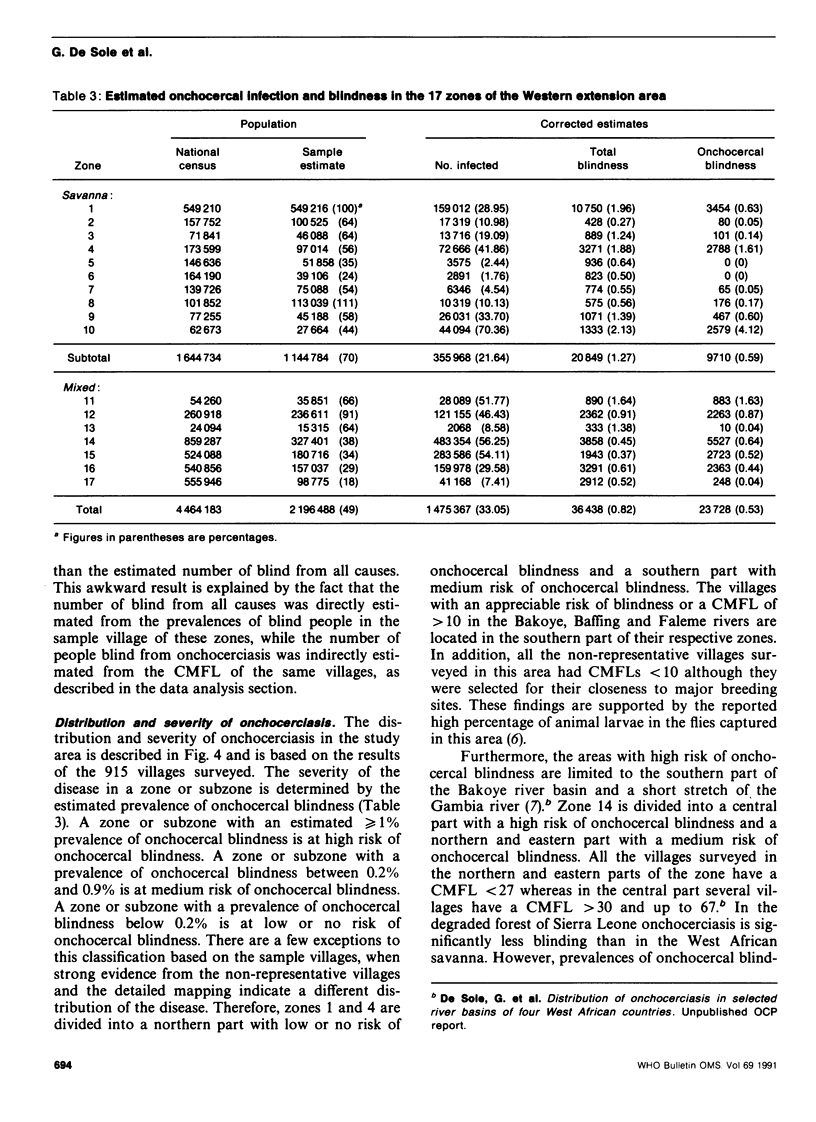
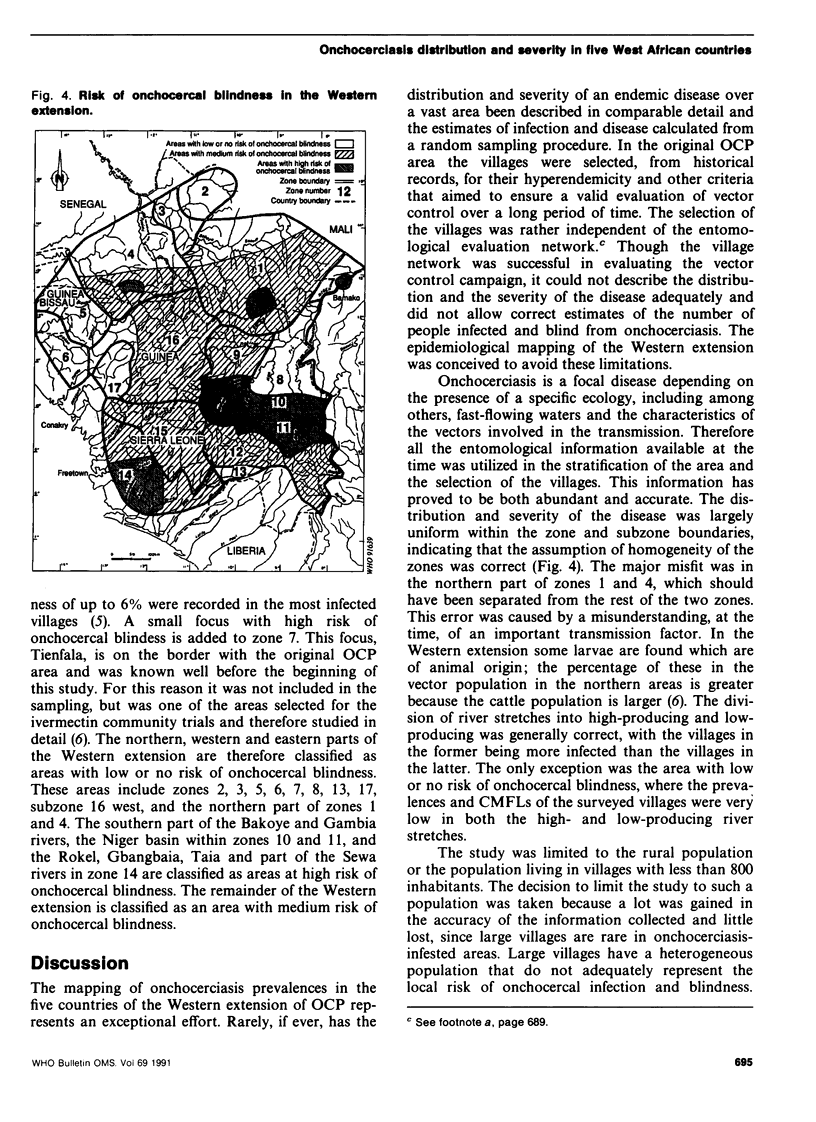
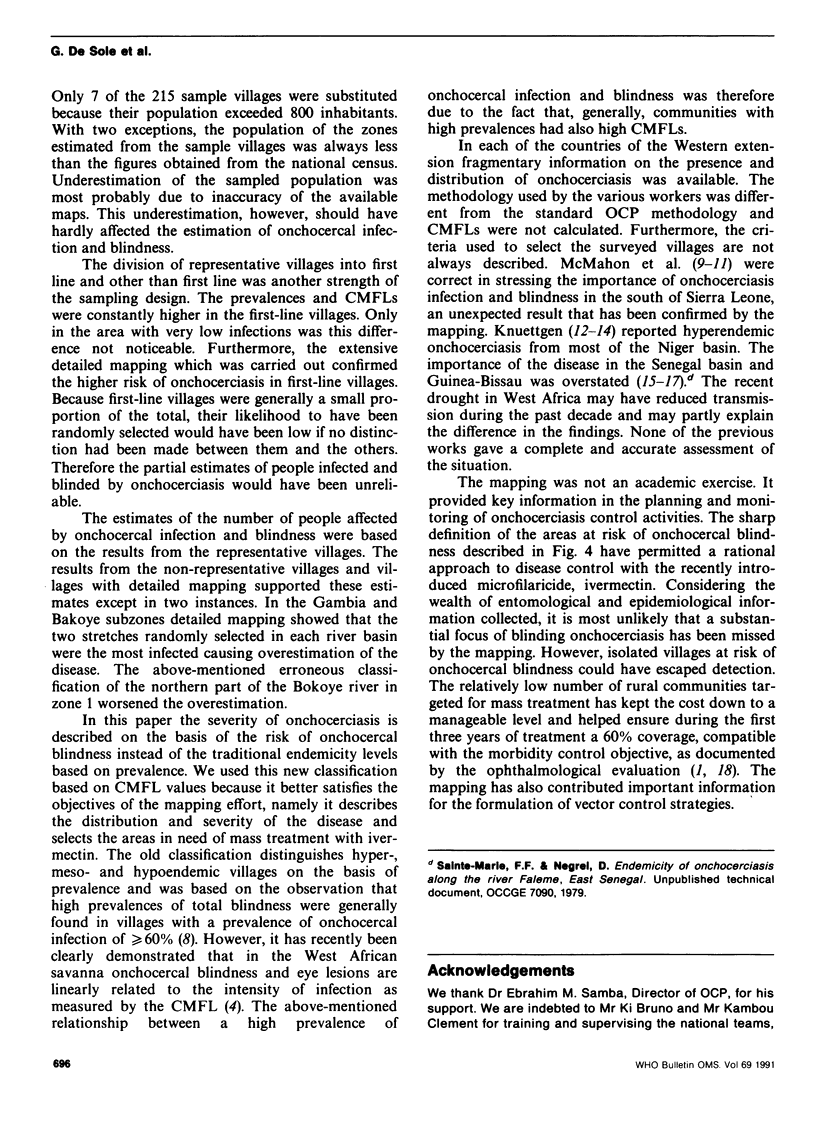
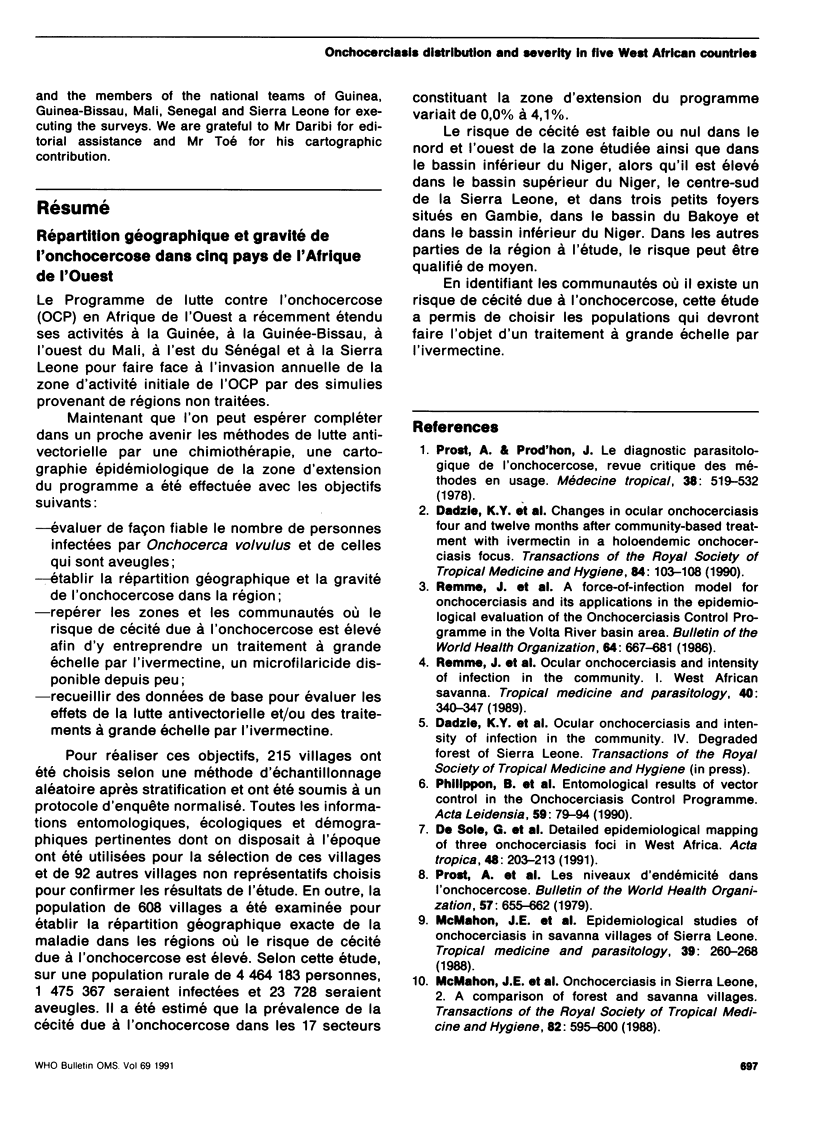
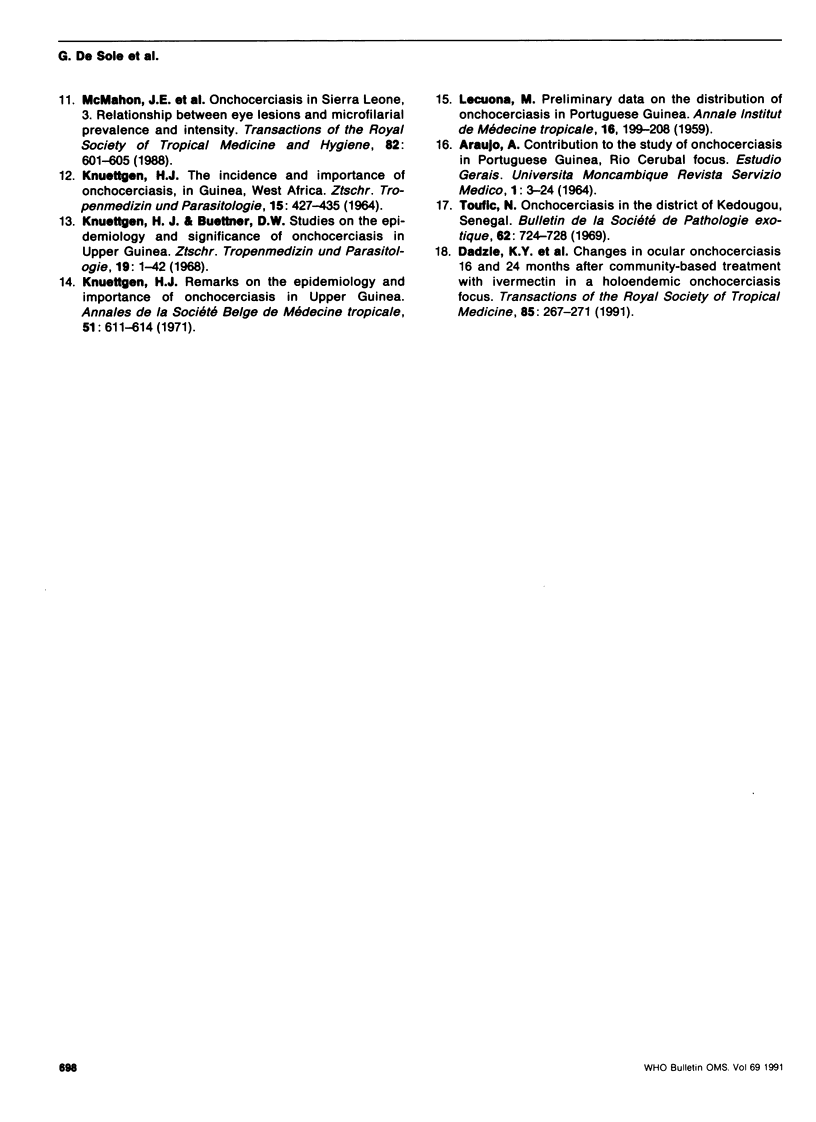
Selected References
These references are in PubMed. This may not be the complete list of references from this article.
- De Sole G., Giese J., Keita F. M., Remme J. Detailed epidemiological mapping of three onchocerciasis foci in West Africa. Acta Trop. 1991 Jan;48(3):203–213. doi: 10.1016/0001-706x(91)90048-o. [DOI] [PubMed] [Google Scholar]
- KNUETTGEN H. J. UNTERSUCHUNGEN UEBER VORKOMMEN UND BEDEUTUNG DER ONCHOZERKOSE IN GUINEA, WEST-AFRIKA. Z Tropenmed Parasitol. 1964 Dec;15:427–435. [PubMed] [Google Scholar]
- McMahon J. E., Sowa S. I., Maude G. H., Hudson C. M., Kirkwood B. R. Epidemiological studies of onchocerciasis in savanna villages of Sierra Leone. Trop Med Parasitol. 1988 Sep;39(3):260–268. [PubMed] [Google Scholar]
- McMahon J. E., Sowa S. I., Maude G. H., Kirkwood B. R. Onchocerciasis in Sierra Leone 3: Relationships between eye lesions and microfilarial prevalence and intensity. Trans R Soc Trop Med Hyg. 1988;82(4):601–605. doi: 10.1016/0035-9203(88)90525-1. [DOI] [PubMed] [Google Scholar]
- McMahon J. E., Sowa S. I., Maude G. H., Kirkwood B. R. Onchocerciasis in Sierra Leone.2: A comparison of forest and savanna villages. Trans R Soc Trop Med Hyg. 1988;82(4):595–600. doi: 10.1016/0035-9203(88)90524-x. [DOI] [PubMed] [Google Scholar]
- Prost A., Hervouet J. P., Thylefors B. Les niveaux d'endémicité dans l'onchocercose. Bull World Health Organ. 1979;57(4):655–662. [PMC free article] [PubMed] [Google Scholar]
- Prost A., Prod'hon J. Le diagnostic parasitologique de l'onchocercose. Revue critique des methodes en usage. Med Trop (Mars) 1978 Sep-Oct;38(5):519–532. [PubMed] [Google Scholar]
- Remme J., Ba O., Dadzie K. Y., Karam M. A force-of-infection model for onchocerciasis and its applications in the epidemiological evaluation of the Onchocerciasis Control Programme in the Volta River basin area. Bull World Health Organ. 1986;64(5):667–681. [PMC free article] [PubMed] [Google Scholar]


